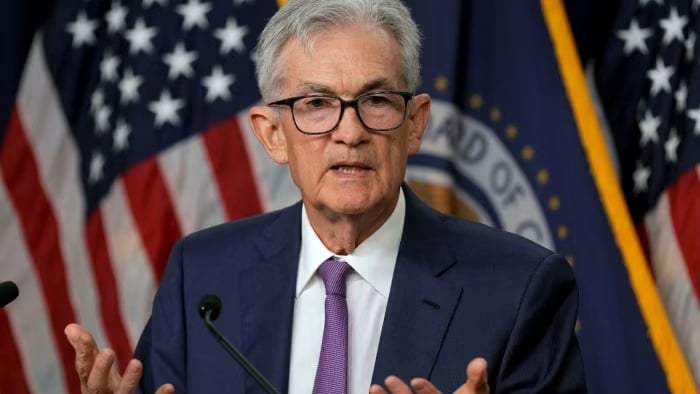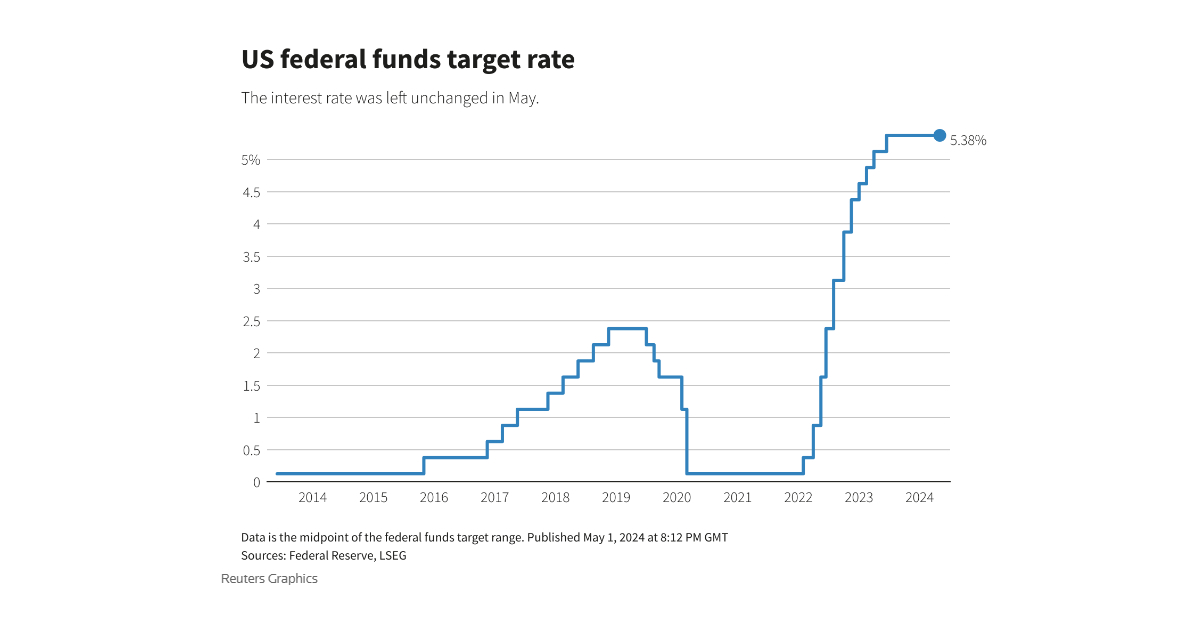Today’s News

Image Souce: AP News
The Federal Reserve decided to keep interest rates unchanged, expressing concerns about the lack of significant progress in addressing inflationary pressures.
Despite a strong start to 2024 with three months of unexpectedly rapid price increases, Fed Chair Jerome Powell noted the anticipated decline in inflation towards the 2% target may take longer than previously anticipated. This pause in progress has prompted a cautious approach, with Powell suggesting that while rate hikes are unlikely, the current benchmark policy rate could persist within the 5.25%-5.50% range for an extended period.
Powell emphasized the belief among U.S. central bankers that the existing policy rate exerts sufficient pressure on economic activity to mitigate inflationary pressures. They are prepared to wait for tangible signs of this effect, even if inflation remains relatively stagnant in the interim. Despite the acceleration in the personal consumption expenditures price index to a 2.7% annual rate in March, Powell reiterated concerns about persistently high inflation levels.
“Inflation is still too high,” Powell stated during a press conference following the Federal Open Market Committee’s meeting. “Further progress in bringing it down is not assured, and the path forward is uncertain.”
Powell maintained his forecast for inflation to decrease over the year but admitted to wavering confidence in this projection. The possibility of rate cuts in the current year remains uncertain, contingent upon various economic factors. Powell highlighted scenarios where persistent inflation and a strong labor market might warrant a delay in rate adjustments, emphasizing the data-dependent nature of any decision-making.
Despite the prevailing economic uncertainty, Powell’s indication that rate hikes were unlikely provided relief to investors worried about a potentially more hawkish stance from the Fed. This sentiment led to a positive response in both stock and bond markets, although Powell’s emphasis on patience suggests a rigorous standard for any future rate hikes. Notably, analysts interpreted Powell’s remarks as less hawkish than anticipated, suggesting that rate cuts have merely been postponed rather than completely ruled out.
Market expectations shifted towards potential rate cuts beginning in September, indicating a recalibration of earlier predictions.
In its latest policy statement, the Fed reiterated its commitment to adjusting interest rates based on inflation trends, affirming that any reduction in the target range would require greater confidence in sustainable progress towards the 2% inflation goal. However, concerns were expressed about the lack of recent progress towards achieving this objective, leaving the timing of any rate cut uncertain.

The U.S. central bank announced a reduction in the pace of shrinking its balance sheet, effective June 1. Instead of USD 60 billion, only USD 25 billion in Treasury bonds will be allowed to run off each month, while mortgage-backed securities will continue to decrease by up to USD 35 billion monthly. This adjustment aims to prevent a shortage of reserves in the financial system, a concern that arose during the Fed’s previous round of “quantitative tightening” in 2019.
While this move could marginally loosen financial conditions, policymakers stress that the balance sheet and interest rate tools serve distinct purposes. Despite efforts to maintain pressure on the economy, the Fed maintains its optimistic assessment of economic growth, noting continued solid expansion and robust job gains with low unemployment rates.
Fed Chair Jerome Powell addressed concerns about the relatively weak 1.6% growth in gross domestic product (GDP) in the first quarter by highlighting a 3.1% increase in private domestic demand as a better indicator of the economy’s strength. He attributed this to a recent surge in immigration, which has bolstered output.
Regarding the risk of stagflation—a scenario characterized by stagnant growth and rising prices—Powell dismissed comparisons to the late 1970s, noting that current conditions differ significantly. With inflation below 3% and robust economic growth, Powell expressed confidence in the economy’s resilience, stating, “I don’t see the ‘stag’ and I don’t see the ‘flation.'”
Other News
U.K. Banks’ Interest Income Doubles on BoE Reserves
Interest earnings on Bank of England reserves for major U.K. high street banks soared to GBP 9.2 billion (USD 11.5 B) in 2023, more than doubling from the previous year.
BlackRock Introduces 401(k) with Monthly Retirement Checks
BlackRock’s new target-date funds with embedded annuities offer retirees predictable monthly income from their 401(k) savings, simplifying retirement planning and addressing concerns over financial security.
BBVA Bids EUR 12bn for Banco Sabadell Merger
BBVA has proposed a takeover bid for Banco Sabadell, valuing the latter at over EUR 12 billion (USD 12.8 B) with a 30% premium. The merger aims to create a robust financial entity.



